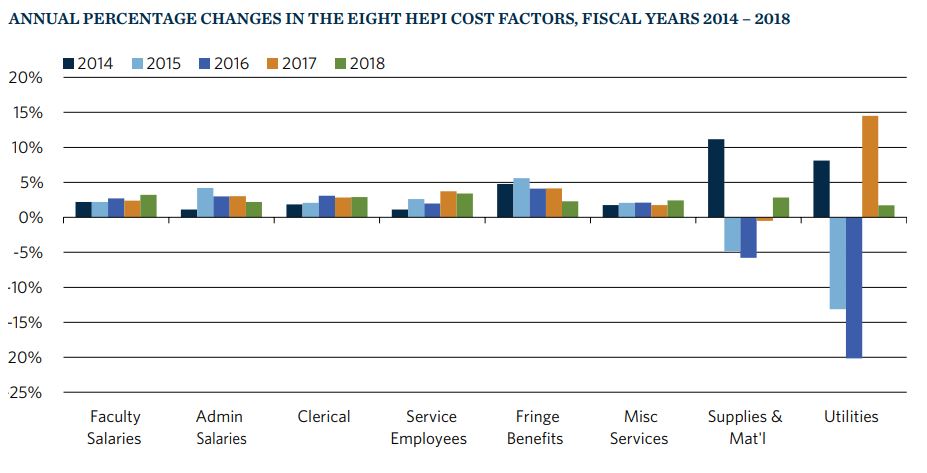
Higher Ed Inflation Notches 2.8 Percent in 2018
The rate of 2.8 percent came in slightly below a mark of 3.3 percent in 2017 on the Higher Education Price Index, a long-running measure of inflation in higher education. But it still slotted in above a 2.4 percent average for the preceding five fiscal years, according to the Commonfund Institute, a branch of the investment giant Commonfund that is focused on education and research activities and that released the latest figures Monday.
Last year’s 3.3 percent figure has been revised from initial reports because of methodological changes affecting data on faculty salaries and fringe benefits. Even after the revision, 2017 had the highest Higher Education Price Index since 2008.
HEPI differs from other measures of inflation, like the Consumer Price Index, because it aims to capture cost changes colleges and universities face. Its primary stated use is to project future budget increases colleges and universities will need in order to preserve their purchasing power.
All eight HEPI components rose in 2018, compared to seven of eight components increasing in 2017. Utilities posted the smallest 2018 increase among the components, 1.7 percent. Service employee costs increased by the most, 3.4 percent.
Meanwhile, faculty salaries, which are the component with the largest weighted share of the index, climbed by 3.2 percent.
On a regional basis, the index ranged from a high of 3.7 percent in the West South Central region to a low of 1.8 percent in the Mountain region. Inflation at private institutions slightly outpaced inflation at publics, 2.9 percent versus 2.6 percent.

